

Articles
How To Store Dairy Products
Modified: August 20, 2024
Learn effective tips and techniques for storing dairy products properly to maintain their freshness and quality. Discover helpful articles on how to store milk, cheese, yogurt, and more.
(Many of the links in this article redirect to a specific reviewed product. Your purchase of these products through affiliate links helps to generate commission for Storables.com, at no extra cost. Learn more)
Introduction
Welcome to our comprehensive guide on how to properly store dairy products. As consumers, we rely on dairy products like milk, butter, cheese, yogurt, and more for their delicious taste and valuable nutritional benefits.
However, dairy products are perishable and need to be stored correctly to maintain their freshness, quality, and safety. Understanding the proper storage techniques will not only help extend the shelf life of these products but also ensure that you enjoy them at their best.
In this article, we will dive into the importance of understanding the shelf life of dairy products and provide practical tips for storing various dairy items. Whether you’re a dairy lover or just looking to make the most out of your grocery purchases, this guide is here to help you keep your dairy products fresh and delicious for as long as possible.
Key Takeaways:
- Proper storage of dairy products is essential for maintaining freshness, quality, and safety. Refrigeration, airtight containers, and attention to expiration dates are key to maximizing shelf life and enjoying delicious dairy items.
- Understanding the unique storage requirements for different dairy products, such as milk, butter, cheese, yogurt, and sour cream, is crucial for maintaining their freshness and flavor. Following specific storage guidelines and tips can help maximize the shelf life of dairy products and ensure their quality.
Read more: How To Store Whey
Understanding the Shelf Life of Dairy Products
Before we delve into the specifics of proper storage techniques, it’s essential to understand the shelf life of different dairy products. Each dairy item has its own unique characteristics and storage requirements.
Milk is one of the most commonly consumed dairy products. Its shelf life can vary depending on factors such as temperature, pasteurization, and packaging. Fresh, pasteurized milk typically has a shelf life of around 7 to 10 days in the refrigerator, while ultra-high temperature (UHT) milk can last for several months without refrigeration, until opened.
Butter, on the other hand, has a longer shelf life. Unsalted butter can be kept in the refrigerator for around 1 to 3 months, while salted butter can last for 3 to 5 months. Freezing butter can further extend its shelf life up to a year.
Cheese comes in various types and forms, such as hard cheese, soft cheese, and processed cheese. Hard cheeses like cheddar and Parmesan have a longer shelf life and can be stored for several months in the refrigerator. Soft cheeses, such as brie and goat cheese, are more perishable and should be consumed within a couple of weeks. Processed cheeses, like American cheese slices, have an extended shelf life due to their added preservatives.
Yogurt is a dairy product that undergoes fermentation. Its shelf life can vary depending on the type and whether it contains live cultures. Unopened yogurt can last up to 2 weeks in the refrigerator. Once opened, it should be consumed within a few days to maintain its freshness and probiotic benefits.
Cream, including heavy cream, light cream, and whipping cream, has a similar shelf life to milk. It typically lasts around 7 to 10 days in the refrigerator. However, whipped cream, made by beating cream and adding sugar, has a shorter shelf life and should be consumed within a day or two.
Sour cream and cottage cheese are also dairy products that require specific storage consideration. Unopened sour cream can last up to a month in the refrigerator, while opened sour cream should be used within a couple of weeks. Cottage cheese, when properly stored, can maintain its quality for up to a week.
It’s worth noting that these are general guidelines, and the shelf life of dairy products may vary based on factors like temperature fluctuations, product quality, and packaging integrity. Always check the expiration or “best by” dates on the packaging for more accurate information.
Now that you have a better understanding of the shelf life of various dairy products, let’s explore the proper storage techniques to keep them fresh and safe for consumption.
Proper Storage Techniques for Dairy Products
Proper storage techniques are crucial for maintaining the freshness, quality, and safety of dairy products. By following these guidelines, you can maximize the shelf life of your dairy items and ensure that they remain delicious and nutritious.
1. Refrigeration is Key: Most dairy products should be stored in the refrigerator at a temperature below 40°F (4°C). This helps slow down the growth of bacteria and preserves their freshness. Make sure your refrigerator is set to the appropriate temperature and avoid storing dairy products in the refrigerator door, as it is the warmest part of the refrigerator.
2. Keep Milk and Cream Sealed: Milk and cream should be kept in their original containers or airtight containers to prevent contamination and maintain their quality. Avoid transferring them to glass pitchers or containers, as they may expose the milk or cream to light, which can affect their taste and nutritional value.
3. Store Butter in a Covered Dish or Container: Butter should be stored in a covered dish or butter dish to protect it from absorbing odors from other foods in the refrigerator. Alternatively, you can keep it in the original packaging or use a butter keeper. Make sure to close the lid tightly to prevent air exposure.
4. Wrap Cheese Properly: Cheese should be stored in its original packaging or wrapped tightly in wax paper or cheese wrap. This helps maintain its moisture and prevents it from drying out or absorbing odors. If a cheese does not come with suitable packaging, you can also use plastic wrap or aluminum foil to wrap it tightly.
5. Store Yogurt Upside Down: To prevent the accumulation of water on the surface of yogurt, store it upside down in the refrigerator. This helps maintain its creamy texture and prevents the liquid from separating.
6. Keep Sour Cream and Cottage Cheese Sealed: Similar to milk and cream, sour cream and cottage cheese should be kept in their original containers or sealed tightly in airtight containers. This helps prevent them from picking up flavors and odors from other foods in the refrigerator.
7. Follow Refrigeration Guidelines for Other Dairy Products: For dairy products like evaporated milk, condensed milk, and buttermilk, follow the specific refrigeration guidelines provided on the packaging. These products may have slightly different storage requirements.
8. Use Separate Storage Areas: To prevent cross-contamination, store different types of dairy products in separate areas of the refrigerator. Dairy products can have distinct aromas that may transfer to other foods, compromising their flavor.
9. Check for Spoilage: Regularly inspect your dairy products for signs of spoilage, such as an off odor, unusual texture, or mold growth. If you notice any of these signs, discard the product immediately.
10. Rotate Stock: Practice the first-in, first-out (FIFO) method by using the oldest dairy products before opening newer ones. This helps prevent wastage and ensures that you consume the products before they expire.
By following these proper storage techniques, you can maintain the freshness, quality, and safety of your dairy products. Now let’s dive into specific storage guidelines for different dairy items.
Storing Milk
Milk is a staple in many households, and proper storage is crucial to maintaining its freshness and quality. Here are some guidelines on how to store milk:
1. Refrigerate Immediately: After purchasing milk from the store, refrigerate it promptly to slow down bacterial growth. Milk should be stored at a temperature below 40°F (4°C). Avoid leaving milk at room temperature for extended periods, especially in warmer climates.
2. Keep in Original Container: Milk is typically packaged in airtight containers that provide protection from light and external odors. It is best to store milk in its original container, as it is specifically designed to maintain its quality. However, if necessary, you can transfer milk to a clean, airtight container that is suitable for refrigeration.
3. Store on a Shelf: Place the milk on a shelf in the refrigerator, rather than the refrigerator door. The door is often subjected to frequent temperature changes, which can compromise the quality of the milk. The colder and more consistent temperature on the shelf will help ensure the milk stays fresh for longer.
4. Avoid Odor Absorption: Milk can easily absorb odors from other foods in the refrigerator. To prevent this, keep milk away from strong-smelling foods like onions, garlic, and seafood. If necessary, you can place milk in a covered container or use a refrigerator shelf liner to further protect it from odor absorption.
5. Check the “Best By” Date: Before consuming milk, check the “best by” date on the packaging. This date indicates the recommended time for consuming the milk to ensure its quality. Discard milk that has passed its expiration date, as it may spoil and pose a health risk.
6. Shake Before Use: Before pouring milk, give the container a gentle shake. This helps redistribute any cream that may have separated and ensures a consistent taste and texture.
7. Freeze if Necessary: If you have excess milk that you don’t anticipate using before it spoils, you can freeze it to extend its shelf life. Pour milk into a freezer-safe container, leaving some room for expansion, and freeze it for up to 3 months. Thaw frozen milk in the refrigerator before using, and be sure to give it a good shake after thawing.
By following these guidelines, you can keep your milk fresh and safe for consumption. Remember to always use your senses to determine if milk is still suitable for consumption. If you notice any off odor, unusual texture, or sour taste, it’s best to discard the milk.
Next, let’s move on to the proper storage techniques for storing butter.
Storing Butter
Butter is a versatile and delicious dairy product that can enhance the flavor of many dishes. To keep butter fresh and flavorful, proper storage is essential. Here are some guidelines on how to store butter:
1. Refrigeration is Key: Butter should be stored in the refrigerator to maintain its freshness. The cool temperature helps slow down the oxidation process, preventing the butter from turning rancid. Keep your refrigerator set at a temperature below 40°F (4°C) for optimal butter storage.
2. Use an Airtight Container or Covered Dish: Butter is susceptible to picking up odors and flavors from other foods in the refrigerator, so it’s important to store it in an airtight container or a covered dish. This will help protect its taste and prevent it from absorbing any unwanted smells.
3. Keep Butter Away from Strong Odors: Butter can easily absorb strong odors, so it’s best to store it separately from foods with pungent aromas, such as onions and garlic. This will help maintain the natural taste and aroma of the butter.
4. Follow the “Best By” Date: Butter typically has a long shelf life, but it’s still important to check the “best by” date on the packaging. This date indicates the recommended time for consuming the butter while it’s at its best quality. If stored properly, unsalted butter can last for 1 to 3 months, while salted butter can last for 3 to 5 months in the refrigerator.
5. Freezing for Extended Storage: If you have a surplus of butter or want to extend its shelf life, you can freeze it. Wrap butter tightly in aluminum foil or place it in a freezer-safe bag to protect it from freezer burn. Properly stored butter can maintain its quality for up to a year in the freezer. Thaw frozen butter in the refrigerator before using it.
6. Room Temperature Butter: If you prefer to have spreadable butter, you can keep a small portion at room temperature. Cut off a portion that you will use within a few days and place it in a covered butter dish or a butter keeper. Keep in mind that room temperature butter should be consumed quickly to avoid spoilage.
7. Unsalted vs. Salted Butter: Unsalted butter tends to have a shorter shelf life than salted butter due to its lack of added preservatives. If you’re not using butter regularly or prefer unsalted butter, it’s best to buy smaller amounts to ensure its freshness.
By following these storage guidelines, you can ensure that your butter remains fresh and flavorful. Remember, when in doubt, always use your senses to determine if the butter is still suitable for consumption. If it develops an off smell, unusual texture, or tastes rancid, it’s best to discard it.
Next, let’s explore the proper storage techniques for different types of cheese.
Read more: How To Store Yogurt
Storing Cheese
Cheese is a beloved dairy product known for its variety of flavors and textures. Proper storage is essential to maintain the quality and taste of different types of cheese. Here are some guidelines on how to store cheese:
1. Keep Cheese Cold: Cheese should be stored in the refrigerator at a temperature between 35°F and 45°F (1.5°C to 7.2°C). It’s important to avoid extreme temperature fluctuations to prevent cheese from drying out or developing mold.
2. Use Cheese Paper or Wax Paper: When storing cheese, wrap it in cheese paper or wax paper to allow it to breathe while protecting it from moisture. Avoid wrapping cheese in plastic wrap, as it can cause condensation and mold growth. If your cheese came with its own packaging, you can store it in that as well.
3. Separate Strong-Smelling Cheese: Some types of cheese have strong aromas that can transfer to other foods. To prevent this, store strong-smelling cheeses, such as blue cheese or aged cheeses, in a separate container or wrap them tightly in their own cheese paper.
4. Store Hard Cheese in the Vegetable Drawer: Hard cheeses like cheddar, Parmesan, and Gouda can be stored in the vegetable drawer or the coldest part of the refrigerator. Make sure to wrap them in cheese paper or wax paper to maintain their moisture and to prevent them from drying out.
5. Keep Soft Cheese in a Covered Container: Soft cheeses, such as brie and Camembert, should be stored in a covered container to maintain their moisture. You can also use cheese paper or wax paper to wrap them before placing them in the container.
6. Wrap Blue Cheese in Foil: Blue cheese is often sold in foil or plastic wrap. To store it properly, keep the original wrapping intact. If the original packaging is damaged, wrap the cheese tightly in foil to prevent it from drying out and absorbing other flavors.
7. Use Different Knives for Each Cheese: To prevent cross-contamination and flavor transfer, use separate knives for different types of cheese. This helps maintain the unique flavors and textures of each cheese.
8. Bring Cheese to Room Temperature: Before serving cheese, it’s best to let it sit at room temperature for about 30 minutes to an hour. This allows the flavors and aromas to fully develop. However, it’s important to rewrap and refrigerate any leftover cheese after it has been brought to room temperature.
9. Check for Mold: Inspect cheese regularly for any signs of mold. If you notice mold growing on a specific area of the cheese, you can cut off that portion and continue to enjoy the rest. However, if mold is present on soft or fresh cheeses, it’s recommended to discard the entire piece.
10. Avoid Freezing Cheese: Freezing cheese can alter its texture and affect its taste. While some harder cheeses can be frozen, they may become crumbly upon thawing. It’s best to consume cheese fresh or within its recommended shelf life.
By following these storage guidelines, you can enjoy cheese at its best. Remember to trust your senses and use common sense when consuming cheese. If it develops an off odor, unusual texture, or tastes sour, it’s best to discard it.
Next, let’s explore proper storage techniques for yogurt.
Storing Yogurt
Yogurt is a popular dairy product known for its creamy texture and probiotic benefits. To keep yogurt fresh and preserve its quality, proper storage is important. Here are some guidelines on how to store yogurt:
1. Refrigerate Immediately: Upon purchasing yogurt, promptly place it in the refrigerator at a temperature below 40°F (4°C). This ensures that the yogurt remains at a cool temperature, slowing down bacterial growth and preserving its freshness.
2. Keep in Original Packaging: Yogurt is typically packaged in containers that are designed to protect it from light and contamination. It is best to store yogurt in its original packaging or airtight containers, as they are specifically designed for refrigeration.
3. Store Away from Strong Odors: Yogurt can easily absorb strong odors from other foods in the refrigerator. To prevent this, store yogurt away from pungent-smelling foods like onions, garlic, and seafood. This helps maintain the natural taste and aroma of the yogurt.
4. Store Yogurt Upside Down: To prevent the accumulation of watery liquid on the surface of yogurt, store it upside down in the refrigerator. This helps distribute the liquid and maintain a creamy texture. Just make sure the container is tightly sealed to prevent any leakage.
5. Check the Expiry Date: Before consuming yogurt, check the expiry or “best by” date on the packaging. Consuming yogurt before this date ensures that you are enjoying it at its best quality. Discard any yogurt that has passed its expiration date.
6. Use Clean Utensils: When serving yogurt, use clean utensils to prevent cross-contamination and the growth of harmful bacteria. Avoid using dirty spoons or double-dipping, as this can introduce contaminants and affect the shelf life of the yogurt.
7. Avoid Freezing Yogurt: Freezing yogurt can change its texture, causing it to become icy or grainy. However, if you have leftover yogurt that you won’t be able to consume before it spoils, you can freeze it in an airtight container for future use. Thaw the frozen yogurt in the refrigerator before consuming.
8. Consume Opened Yogurt Promptly: Once opened, yogurt should be consumed within a few days. The longer it is kept open, the higher the risk of contamination and flavor deterioration. It’s best to finish the yogurt within the recommended time frame to enjoy it at its best.
9. Portable Yogurt Storage: If you’re taking yogurt on the go, consider using insulated lunch bags or coolers to keep it at a cool temperature. You can also include ice packs or frozen gel packs to maintain the yogurt’s freshness until you’re ready to consume it.
By following these storage guidelines, you can ensure that your yogurt remains fresh, creamy, and enjoyable. Remember to always use your senses to determine if the yogurt is still suitable for consumption. If you notice any off odor, unusual texture, or sour taste, it’s best to discard the yogurt.
Next, let’s move on to the proper storage techniques for cream.
Store dairy products in the coldest part of the fridge, usually the back. Keep milk and yogurt on the top shelf, cheese in the deli drawer, and butter in the dairy compartment.
Storing Cream
Cream is a versatile dairy product that adds richness and creaminess to various dishes and desserts. Proper storage of cream is crucial to maintain its freshness and prevent spoilage. Here are some guidelines on how to store cream:
1. Refrigerate Immediately: After purchasing cream, ensure that it is refrigerated promptly. Cream should be stored in the refrigerator at a temperature below 40°F (4°C). This helps slow down bacterial growth and maintains the cream’s freshness.
2. Use Sealed Containers: Cream is usually sold in sealed containers. It is best to store cream in its original packaging to maintain its quality. If you need to transfer the cream to another container, make sure it is airtight and suitable for refrigeration.
3. Store in the Main Body of the Refrigerator: Place the cream in the main body of the refrigerator, rather than the refrigerator door. The main body of the refrigerator provides a more consistent temperature, which helps preserve the cream’s freshness for a longer period.
4. Avoid Odor Absorption: Cream can easily absorb odors from other foods in the refrigerator. To prevent this, keep cream away from strong-smelling foods such as onions, garlic, and seafood. If necessary, you can store the cream in a covered container to provide additional protection.
5. Keep Cream Away from Light: Exposure to light can cause cream to deteriorate and lose its flavor. Store cream in a dark area of the refrigerator or use a storage container made of opaque material to protect it from light exposure.
6. Check the Expiration Date: Before using cream, check the expiration date on the packaging. The expiration date indicates the recommended time for consuming the cream at its best quality. Discard cream that has gone past its expiration date.
7. Shake Well Before Use: Before using cream, give the container a gentle shake to ensure that the cream is properly mixed and the consistency is smooth. This helps to distribute the fat content evenly throughout the cream.
8. Freeze for Extended Storage: If you have excess cream that you won’t be able to consume before it spoils, you can freeze it to extend its shelf life. Pour the cream into a freezer-safe container, leaving some room for expansion, and freeze it for up to 3 months. Thaw the frozen cream in the refrigerator before using it and give it a gentle shake once thawed.
By following these storage guidelines, you can maintain the freshness and quality of cream. Always use your senses to determine if the cream is still suitable for consumption. If you notice any off odor, unusual texture, or sour taste, it’s best to discard the cream.
Next, let’s explore proper storage techniques for sour cream.
Storing Sour Cream
Sour cream is a creamy and tangy dairy product that is commonly used as a topping, ingredient, or accompaniment to various dishes. Proper storage is essential to maintain its freshness and prevent spoilage. Here are some guidelines on how to store sour cream:
1. Refrigerate Immediately: After purchasing sour cream, make sure to refrigerate it promptly. Sour cream should be stored in the refrigerator at a temperature below 40°F (4°C). This helps slow down bacterial growth and preserves the freshness of the sour cream.
2. Use Sealed Containers: Sour cream is typically sold in sealed containers. It is best to store sour cream in its original packaging to maintain its quality. If you need to transfer the sour cream to another container, make sure it is airtight and suitable for refrigeration.
3. Store in the Main Body of the Refrigerator: Place the sour cream in the main body of the refrigerator, away from the refrigerator door. The main body of the refrigerator provides a more consistent temperature, which helps preserve the sour cream’s freshness for a longer period.
4. Avoid Odor Absorption: Sour cream can easily absorb odors from other foods in the refrigerator. Store sour cream away from strong-smelling foods such as onions, garlic, and seafood. To provide extra protection, you can also store the sour cream in a covered container.
5. Check the Expiration Date: Before using sour cream, always check the expiration date on the packaging. The expiration date indicates the recommended time for consuming the sour cream at its best quality. Discard sour cream that has passed its expiration date.
6. Keep the Lid Tight: After each use, make sure to seal the container tightly to prevent air exposure. Oxygen can contribute to the breakdown of sour cream, causing it to spoil more quickly. A tightly sealed lid helps maintain the freshness of the sour cream.
7. Avoid Double Dipping: To prevent cross-contamination and the growth of harmful bacteria, avoid double dipping into the container with used utensils. Instead, use clean utensils each time you scoop out sour cream.
8. Check for Spoilage: Regularly inspect the sour cream for any signs of spoilage, such as an off smell, mold growth, or unusual texture. If you notice any of these signs, discard the sour cream immediately.
9. Stir Before Using: Sour cream may develop a watery or separated texture over time. Before using sour cream, give it a gentle stir to mix it back to a smooth and creamy consistency.
By following these storage guidelines, you can maximize the shelf life and maintain the quality of your sour cream. Trust your senses to determine if the sour cream is still suitable for consumption. If you notice any off odor, mold growth, or a sour taste, it’s best to err on the side of caution and discard the sour cream.
Next, let’s explore proper storage techniques for cottage cheese.
Read more: How To Store Brie Cheese
Storing Cottage Cheese
Cottage cheese is a versatile dairy product known for its creamy texture and mild flavor. Proper storage is crucial to maintain its freshness and prevent spoilage. Here are some guidelines on how to store cottage cheese:
1. Refrigerate Immediately: After purchasing cottage cheese, ensure that it is refrigerated promptly. Cottage cheese should be stored in the refrigerator at a temperature below 40°F (4°C). This helps slow down bacterial growth and maintains the freshness of the cottage cheese.
2. Use Sealed Containers: Cottage cheese is often sold in sealed containers. It is best to store cottage cheese in its original packaging to maintain its quality. If necessary, you can transfer the cottage cheese to an airtight container suitable for refrigeration.
3. Keep in the Main Body of the Refrigerator: Place the cottage cheese in the main body of the refrigerator, away from the refrigerator door. The main body of the refrigerator provides a more consistent temperature, helping preserve the cottage cheese’s freshness for a longer shelf life.
4. Avoid Odor Contamination: Cottage cheese can absorb odors from other foods in the refrigerator. Store cottage cheese away from strong-smelling foods like onions, garlic, and seafood. Consider placing it in a covered container or using a refrigerator shelf liner to provide additional protection.
5. Check the Expiration Date: Before consuming cottage cheese, check the expiration date on the packaging. The expiration date indicates the recommended time for consuming the cottage cheese at its best quality. Discard cottage cheese that has passed its expiration date.
6. Stir Before Serving: Over time, cottage cheese can separate, with liquid pooling at the top. Before serving, give the cottage cheese a gentle stir to reincorporate the liquid and achieve a creamy consistency.
7. Consume Opened Cottage Cheese Promptly: Once opened, cottage cheese should be consumed within a few days. The longer it is kept open, the higher the risk of contamination and flavor deterioration. It’s best to finish the cottage cheese within the recommended time frame to enjoy it at its best.
8. Store Upside Down: To help maintain the moisture content and prevent excess liquid accumulation, store the cottage cheese container upside down in the refrigerator. This can help extend its shelf life and preserve its texture.
By following these storage guidelines, you can ensure that your cottage cheese remains fresh and enjoyable. Remember to trust your senses and use common sense when consuming cottage cheese. If it develops an off odor, unusual texture, or tastes sour, it’s best to discard it.
Next, let’s discuss the proper storage techniques for other dairy products such as cream cheese, ricotta cheese, and other specialty dairy items.
Storing Other Dairy Products
In addition to milk, butter, cheese, yogurt, sour cream, and cottage cheese, there are various other dairy products that you may encounter in your culinary adventures. Here are some guidelines on how to store these different dairy items:
Cream Cheese: Cream cheese should be stored in the refrigerator at a temperature below 40°F (4°C). It is typically sold in airtight containers, and it’s best to store it in its original packaging. If the cream cheese is already opened, ensure that the lid is tightly sealed or transfer it to an airtight container to prevent it from drying out or absorbing odors.
Ricotta Cheese: Fresh ricotta cheese should be stored in the refrigerator, tightly covered, and consumed within a few days. To prevent it from drying out, place the ricotta cheese in a container and cover it with a layer of water or olive oil. Before using it, drain off the excess liquid and give it a gentle stir.
Whipped Cream: Whipped cream should be stored in the refrigerator at a temperature below 40°F (4°C). It is best to keep it in its original packaging or container, tightly sealed. Whipped cream should be consumed within a day or two after opening to maintain its fluffy texture and prevent it from separating.
Condensed Milk and Evaporated Milk: Unopened condensed milk and evaporated milk can be stored in the pantry or cupboard until the “best by” date. Once opened, transfer any remaining contents to an airtight container and store them in the refrigerator. These types of milk should be used within a few days after opening.
Buttermilk: Buttermilk should be stored in the refrigerator and kept tightly sealed. It is best to use it before the expiration date indicated on the packaging. If you have extra buttermilk that you won’t be able to use in time, you can freeze it in ice cube trays or small portions for future use. Thaw frozen buttermilk in the refrigerator before using and give it a good shake or stir.
Other Specialty Dairy Items: Depending on your culinary repertoire, you may encounter other specialty dairy products such as mascarpone, crème fraîche, or kefir. These items should be stored in the refrigerator according to the specific instructions on the packaging. Always check the expiration date and use your senses to determine their freshness and quality.
By properly storing these various dairy items, you can prolong their shelf life and ensure their taste and quality. Always follow the storage instructions on the packaging and trust your senses to determine if a product is still suitable for consumption. If you notice any signs of spoilage, such as an off odor, unusual texture, or sour taste, it’s best to discard the product.
Now that we’ve covered the proper storage techniques for various dairy products, let’s move on to some general tips for maximizing freshness and quality.
Tips for Maximizing Freshness and Quality
Proper storage is essential for maximizing the freshness and quality of dairy products. Here are some general tips to help you keep your dairy items at their best:
1. Check the Expiration Dates: Always check the expiration or “best by” dates on the packaging before consuming dairy products. These dates indicate the recommended time for consuming the products while they are at their peak quality.
2. Use First-In, First-Out (FIFO) Method: When purchasing new dairy products, place them at the back of the refrigerator or pantry and use the older ones first. This helps prevent waste by ensuring that products are consumed before they expire.
3. Store Dairy Products in Their Original Packaging: Many dairy products come in packaging designed to maintain their freshness. It’s best to store them in their original packaging to protect them from light, air, and odor transfer.
4. Avoid Cross-Contamination: Keep different types of dairy products separate to avoid cross-contamination and flavor transfer. Store them in different areas of the refrigerator or use separate containers.
5. Maintain Proper Temperature: Ensure that your refrigerator is set to the appropriate temperature (below 40°F or 4°C) to keep dairy products fresh. Avoid temperature fluctuations by not leaving the refrigerator door open unnecessarily.
6. Keep Dairy Products Clean: When handling dairy products, use clean utensils to prevent contamination. Avoid double-dipping or using dirty spoons that may introduce harmful bacteria.
7. Minimize Air Exposure: Air exposure can contribute to the deterioration of dairy products. Seal containers tightly to minimize air contact and slow down the oxidation process.
8. Avoid Freezing Dairy Products: While some dairy products can be frozen, freezing can change their texture and affect their taste. It’s best to consume dairy products fresh or within their recommended shelf life.
9. Taste and Smell Test: Trust your senses when determining the freshness of dairy products. If a product has an off odor, unusual texture, or sour taste, it’s best to discard it.
10. Store Dairy Products Properly: Following the specific storage guidelines for each dairy product is essential. From milk to cheese, yogurt to sour cream, ensuring that they are stored correctly helps maintain their freshness, flavor, and nutritional value.
By following these tips, you can maximize the freshness, quality, and safety of your dairy products. Remember that while guidelines are helpful, each dairy product may have specific considerations, so always check the packaging or consult the manufacturer’s instructions for the best storage practices.
Now that you’re armed with knowledge on proper storage techniques and tips, you can enjoy your dairy products at their best for longer periods.
If you want to learn more about specific dairy products or have any other questions, feel free to ask!
Conclusion
Proper storage of dairy products is crucial for maintaining their freshness, quality, and safety. Whether it’s milk, butter, cheese, yogurt, sour cream, or any other dairy item, following the right storage techniques can significantly extend their shelf life and ensure that they remain delicious and nutritious for as long as possible.
Understanding the shelf life of dairy products is the first step in knowing how to store them correctly. Each dairy item has its own unique characteristics and storage requirements, so it’s important to familiarize yourself with their specific guidelines.
Refrigeration is key for most dairy products, as it helps slow down bacterial growth. Keeping dairy products in their original containers or properly sealed airtight containers is vital to prevent contamination and maintain their quality.
By storing milk, butter, cheese, yogurt, sour cream, and cottage cheese in suitable conditions, away from strong-smelling foods, at the right temperature, and using proper storage containers, you can maximize their freshness and flavor. Checking expiration dates, using the FIFO method, and minimizing air exposure are additional steps that contribute to maintaining the quality of dairy products.
Remember to use your senses and exercise caution when consuming dairy products. If a product has an off odor, unusual texture, or sour taste, it’s best to discard it to avoid potential health risks.
By following the guidelines and tips outlined in this comprehensive guide, you can ensure that your dairy products are stored properly, maximizing their shelf life and allowing you to enjoy them at their best.
Now armed with the knowledge of proper storage techniques, you can confidently stock your refrigerator and pantry with a variety of dairy products, knowing that you are equipped to maintain their freshness, quality, and safety. So go ahead, savor the creamy goodness of dairy products and make the most out of your culinary adventures!
If you have any further questions or need more information about specific dairy products, feel free to ask. Enjoy your dairy products and happy storing!
Frequently Asked Questions about How To Store Dairy Products
Was this page helpful?
At Storables.com, we guarantee accurate and reliable information. Our content, validated by Expert Board Contributors, is crafted following stringent Editorial Policies. We're committed to providing you with well-researched, expert-backed insights for all your informational needs.
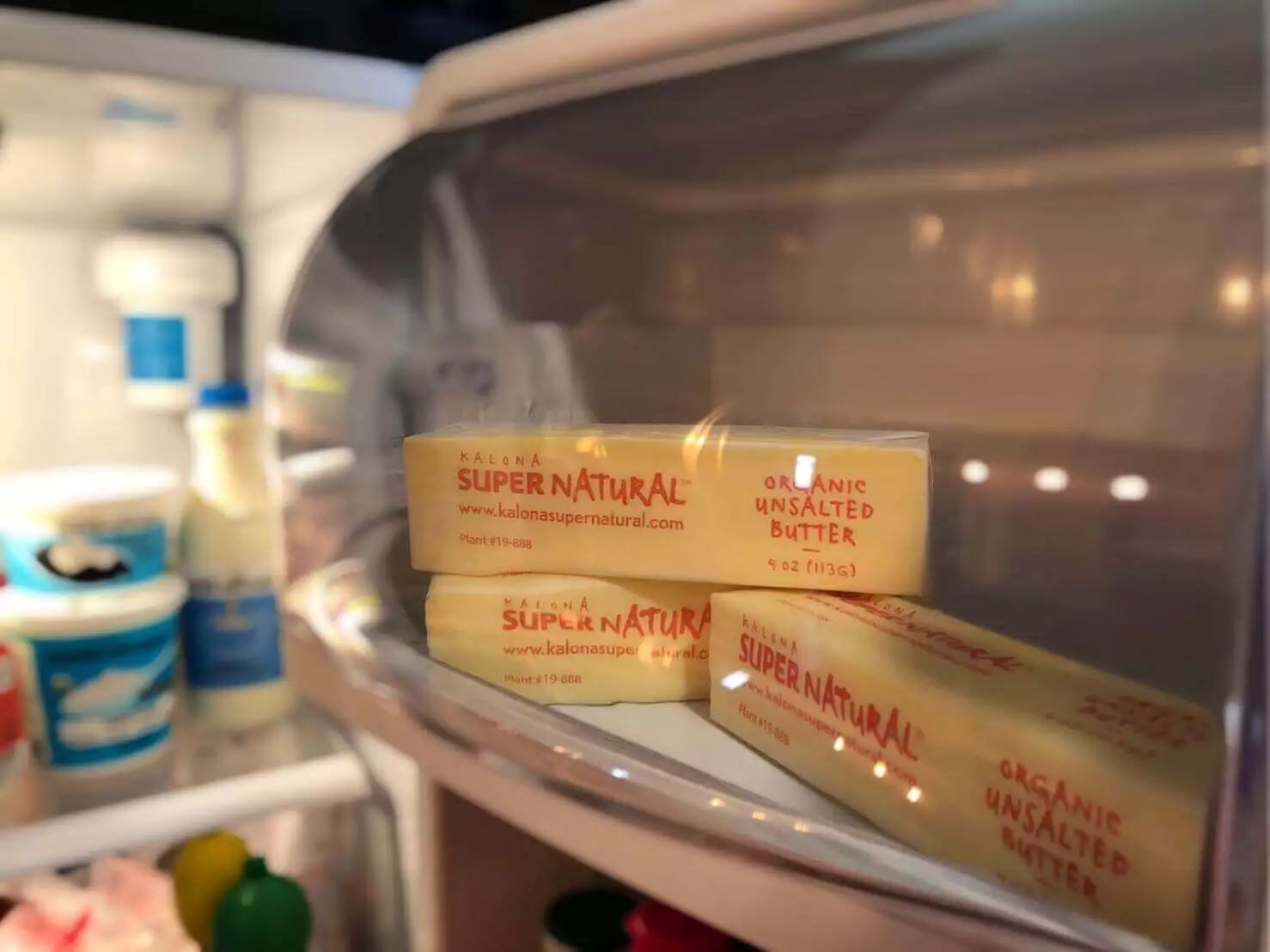
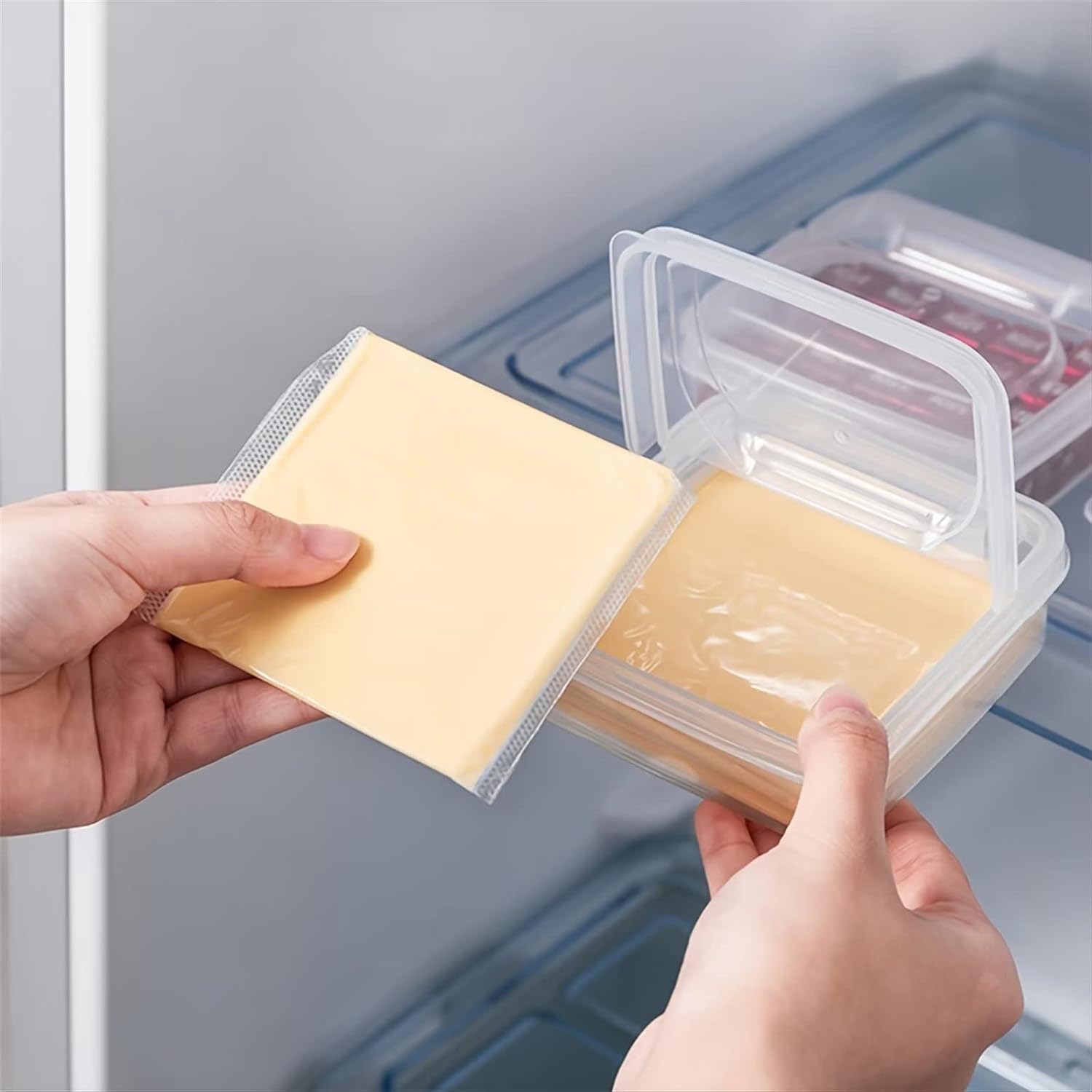
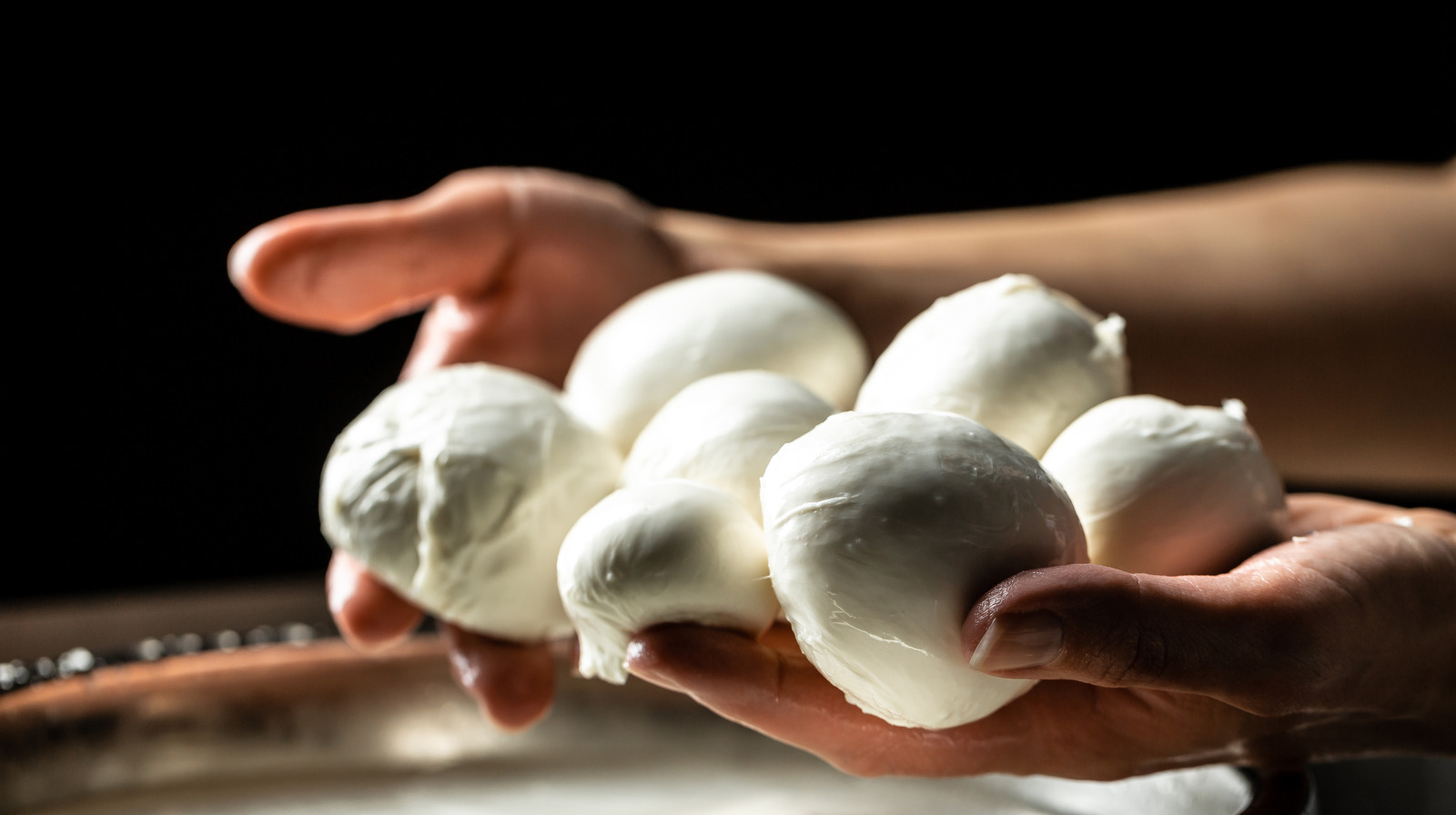




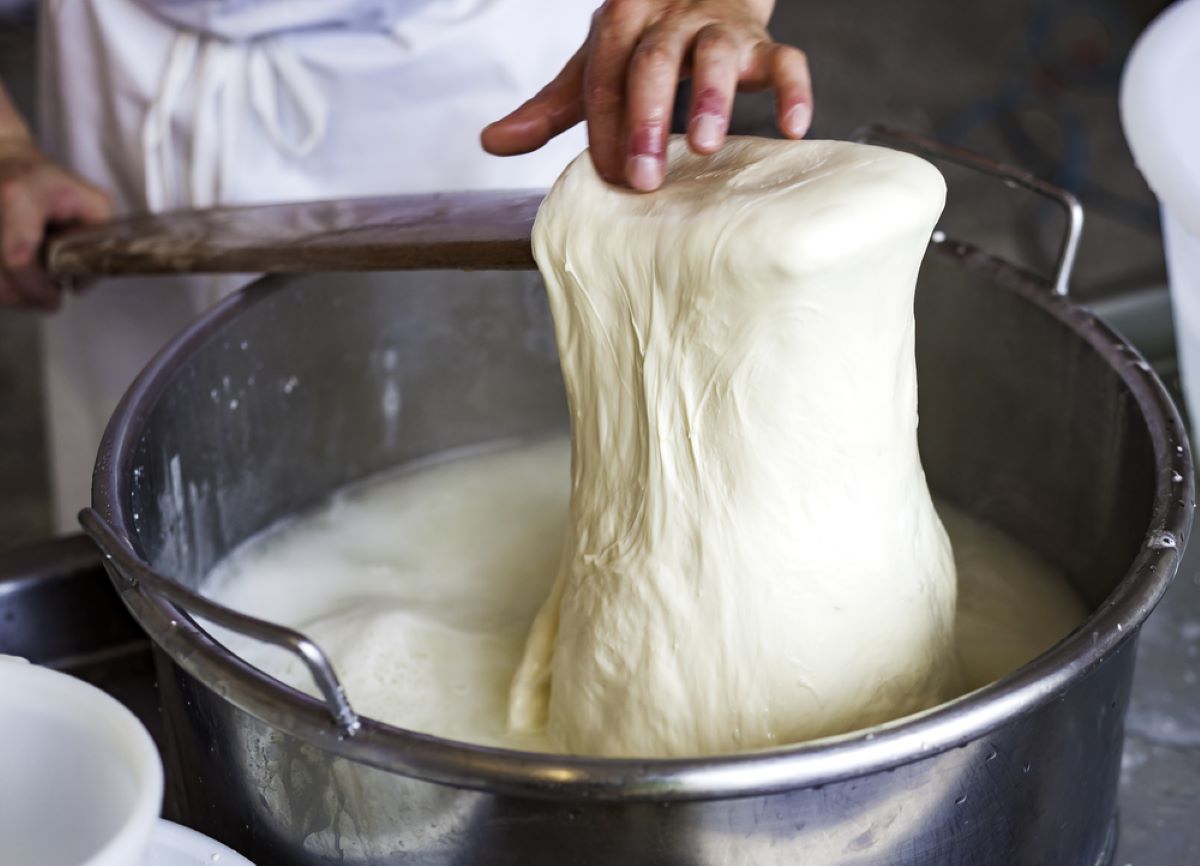

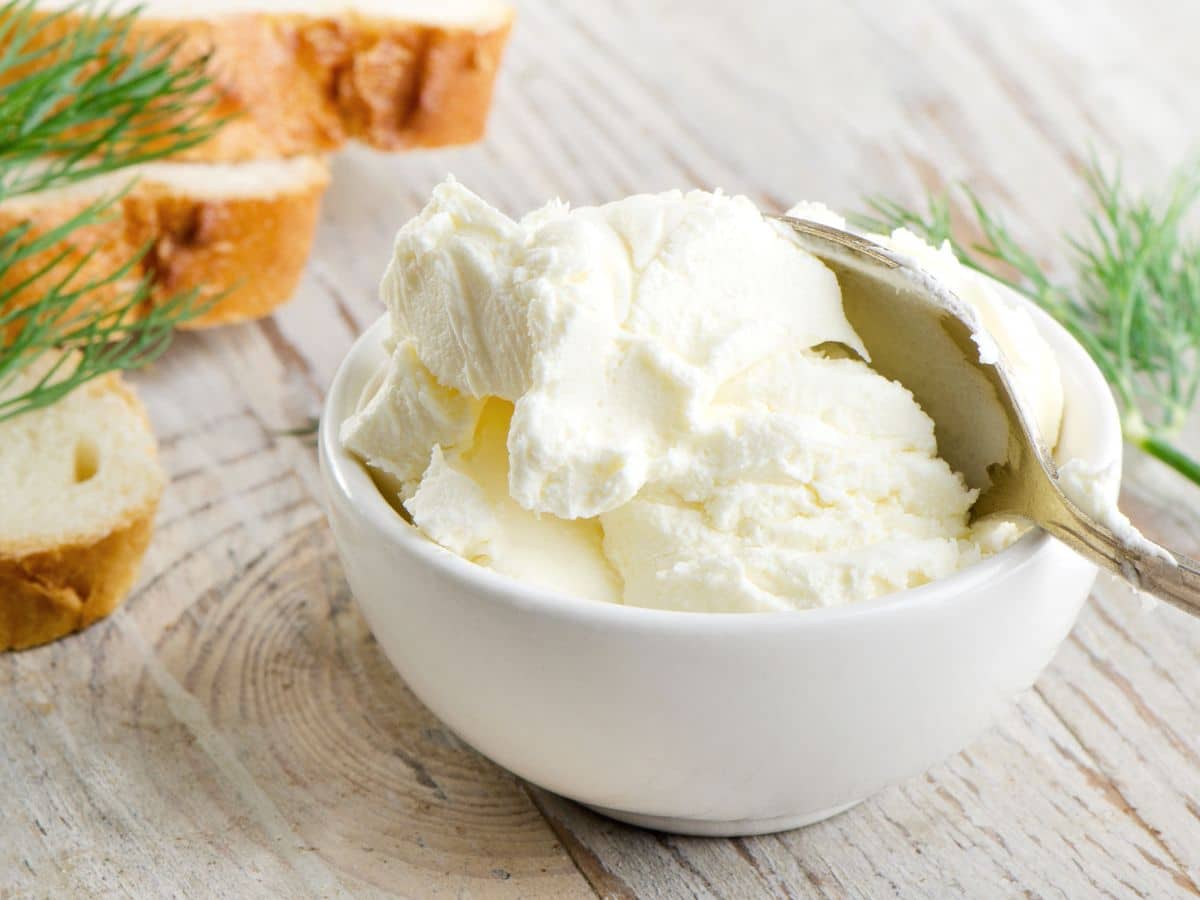

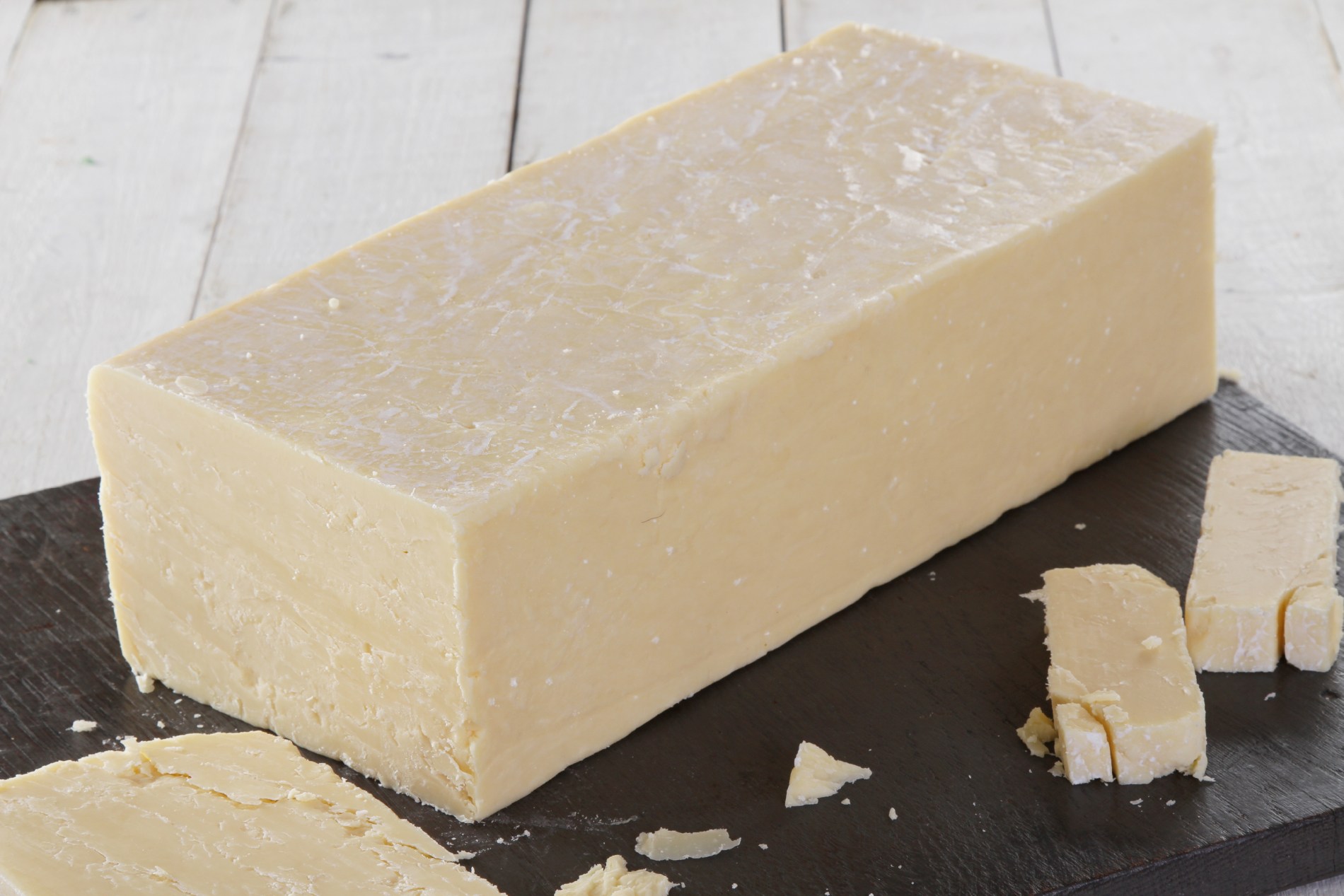


0 thoughts on “How To Store Dairy Products”